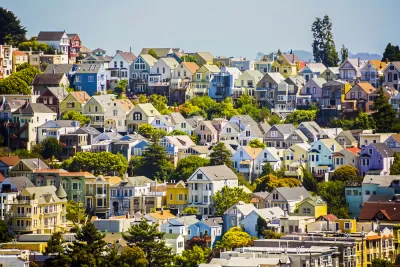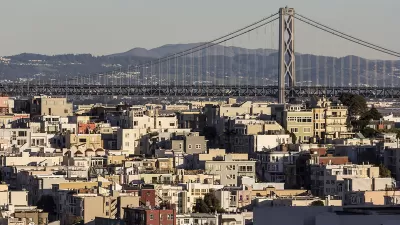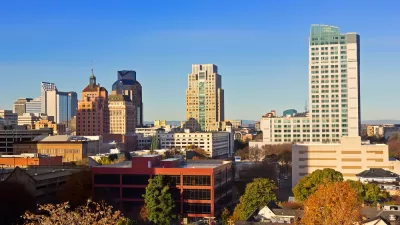Prospects for solving the Bay Area's severe housing shortage look far off. Action on the state level may be one way to approach this crippling collective action problem.

Facing some of the nation's highest prices, the Bay Area has become ground zero for the housing crisis. SPUR president Gabriel Metcalf writes, "The problem was that we needed to figure out where all the newcomers could live without pushing existing residents out. And in this fundamental task of urban governance, we have failed terribly."
Tracing the problem's history, Metcalf defends his organization. "SPUR began sounding the alarm in the late 1970s. Following a citywide downzoning and the early signs of gentrification in some San Francisco neighborhoods, it was clear that the city was headed for a housing shortage."
Ideally, Metcalf writes, the Bay Area would build more housing "at all income levels." To get there, he cites putative policies that encourage density, make places more walkable, fund affordable housing, and defend residents from displacement. Quite a wish list, to be sure.
Metcalf acknowledges the issue's entrenched difficulty, calling the housing shortage a collective action problem with no easy local solution. He wants to see solutions that reach beyond the Bay Area. One example: a new state-level framework for housing approvals, "one that strengthens state housing targets for regional and local governments and makes infill housing easier to build, along with reforming the tax system by letting cities keep more of the residential property tax and rewarding cities that build densely enough in transit-oriented locations."
FULL STORY: The Permanent Housing Crisis

Planetizen Federal Action Tracker
A weekly monitor of how Trump’s orders and actions are impacting planners and planning in America.

San Francisco's School District Spent $105M To Build Affordable Housing for Teachers — And That's Just the Beginning
SFUSD joins a growing list of school districts using their land holdings to address housing affordability challenges faced by their own employees.

The Tiny, Adorable $7,000 Car Turning Japan Onto EVs
The single seat Mibot charges from a regular plug as quickly as an iPad, and is about half the price of an average EV.

With Protected Lanes, 460% More People Commute by Bike
For those needing more ammo, more data proving what we already knew is here.

In More Metros Than You’d Think, Suburbs are Now More Expensive Than the City
If you're moving to the burbs to save on square footage, data shows you should think again.

The States Losing Rural Delivery Rooms at an Alarming Pace
In some states, as few as 9% of rural hospitals still deliver babies. As a result, rising pre-term births, no adequate pre-term care and "harrowing" close calls are a growing reality.
Urban Design for Planners 1: Software Tools
This six-course series explores essential urban design concepts using open source software and equips planners with the tools they need to participate fully in the urban design process.
Planning for Universal Design
Learn the tools for implementing Universal Design in planning regulations.
Smith Gee Studio
City of Charlotte
City of Camden Redevelopment Agency
City of Astoria
Transportation Research & Education Center (TREC) at Portland State University
US High Speed Rail Association
City of Camden Redevelopment Agency
Municipality of Princeton (NJ)





























